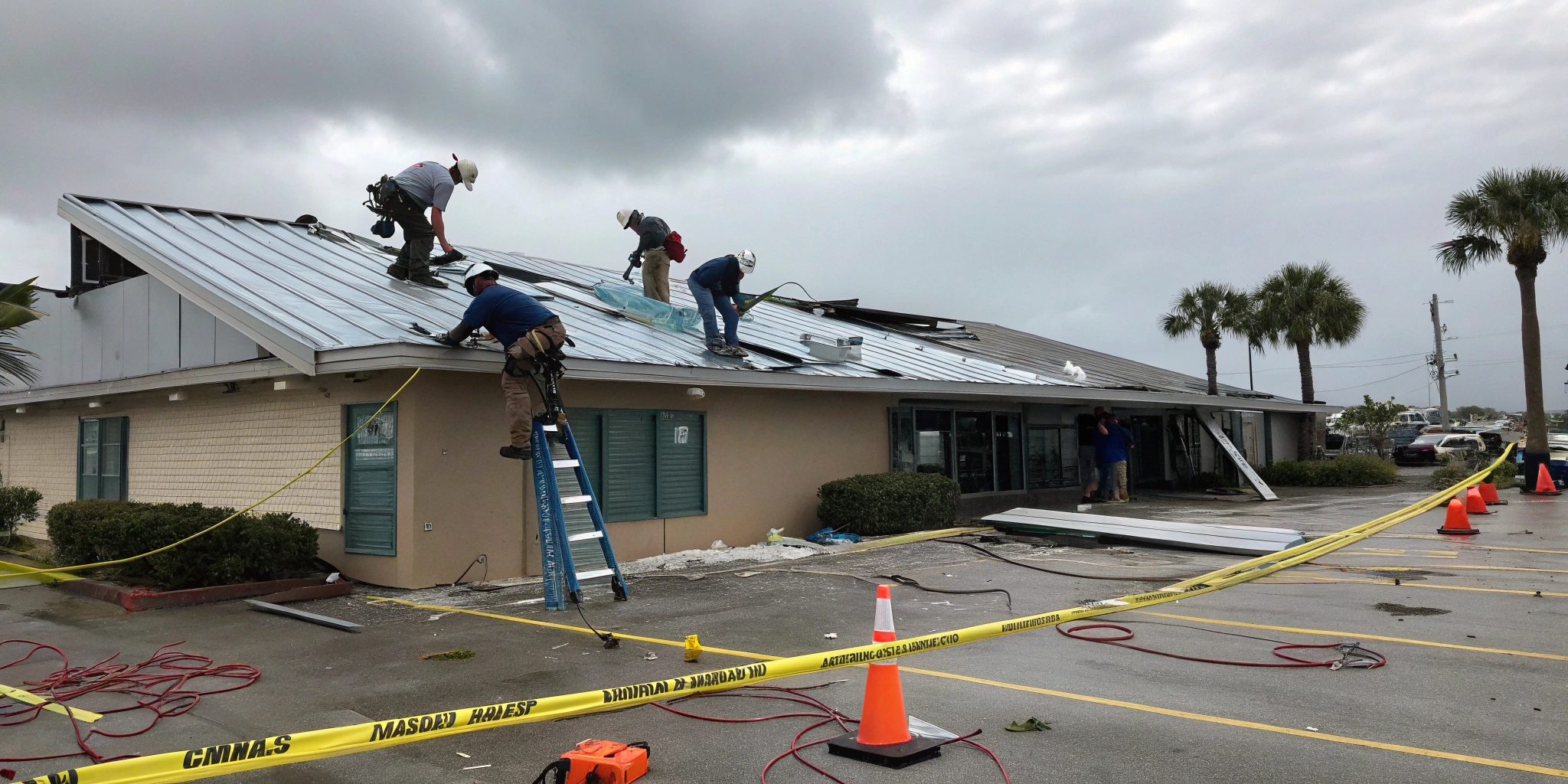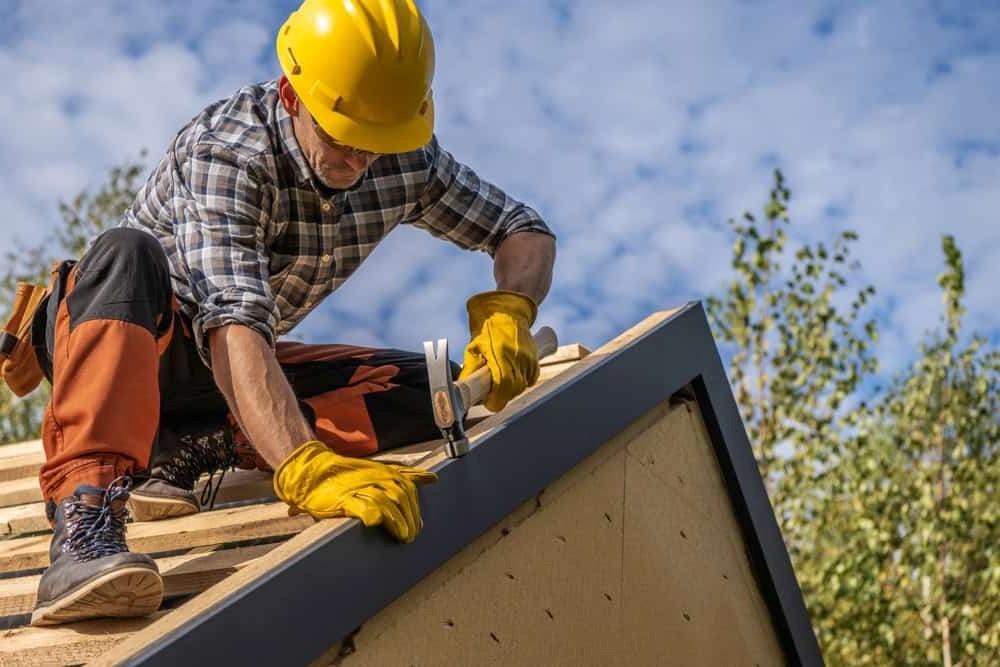A Category 5 hurricane roof for commercial buildings offers unmatched protection against extreme storms. These roofs withstand winds exceeding 157 mph, ensuring safety and durability. Roofing experts design and install systems to meet strict building codes in hurricane-prone areas like Florida. This guide explains key materials, installation techniques, and maintenance tips for a resilient roof. Whether you own a warehouse or office, investing in a hurricane-resistant roof safeguards your property and reduces long-term costs. Read on to learn how to prepare your commercial building for the worst storms.
Why Category 5 Hurricane Roofs Matter for Commercial Buildings
Hurricanes pose a severe threat to commercial properties, especially in coastal regions. Category 5 storms, with winds over 157 mph, can destroy standard roofs, leading to costly repairs. A hurricane-resistant roof minimizes damage, protects assets, and ensures occupant safety. These roofs meet strict building codes, like those in Florida’s High Velocity Hurricane Zones. They also lower insurance premiums by reducing risk.
Moreover, a robust roof maintains business continuity during storm season. Water leaks or structural failure can halt operations, causing financial losses. Therefore, investing in a Category 5 hurricane roof is a smart choice for long-term protection. Commercial roofing experts assess your building’s needs and recommend systems designed for extreme weather, ensuring compliance and durability.

Best Materials for Category 5 Hurricane Roofs
Choosing the right materials is critical for a hurricane-resistant commercial roof. Several options stand out for their strength and performance in high-wind conditions.
- Spray Polyurethane Foam (SPF): SPF creates a seamless, adhered surface that resists wind uplift. It’s ideal for flat commercial roofs and offers excellent insulation. SPF roofs can withstand winds over 200 mph, earning Category 5 warranties.
- Metal Roofing: Metal panels, like standing seam systems, resist winds up to 160 mph. They’re durable and require minimal maintenance. Proper installation prevents panel detachment during storms.
- Modified Bitumen: This multi-layered system combines asphalt and polymers for flexibility. It resists wind, hail, and fire, making it suitable for low-slope roofs.
Each material has unique benefits, but SPF and metal are top choices for Category 5 protection.
Key Design Features for Hurricane Resistance
Roof design plays a vital role in withstanding Category 5 hurricanes. Shape, slope, and structural elements enhance a roof’s ability to resist high winds and debris.
Hip roofs, with slopes on all sides, perform better than gable roofs. They reduce wind uplift by allowing air to flow smoothly. A 30-degree slope is optimal for minimizing lift forces. Additionally, reinforced framing and sealed roof decks add strength. Hurricane straps and clips secure trusses to walls, preventing detachment.
Proper flashing and underlayment are also essential. Sealed underlayment prevents leaks if tiles are damaged, while robust flashing blocks water entry at joints. These features, combined with quality materials, create a roof capable of enduring extreme storms. Always hire experienced contractors to ensure precise installation.
Installation Process for Category 5 Hurricane Roofs
Installing a Category 5 hurricane roof requires precision and expertise. The process involves several steps to ensure durability and compliance with local codes.
- Inspection and Planning: Experts assess the existing roof and building structure. They check for damage and determine eligibility for a hurricane-resistant upgrade. A detailed plan outlines scope, timeline, and costs.
- Preparation: Contractors remove old roofing materials and repair the deck. They reinforce framing and install hurricane clips for added stability.
- Material Application: For SPF roofs, technicians apply foam in layers, creating a seamless surface. Metal roofs require precise panel attachment with high-wind-rated fasteners.
- Final Inspection: After installation, experts verify compliance with codes and issue a Category 5 warranty.
Hiring certified contractors ensures proper execution. This process protects your property and maximizes the roof’s lifespan.
Maintenance Tips for Long-Term Durability
Regular maintenance keeps a Category 5 hurricane roof in top condition. Proactive care prevents vulnerabilities and extends the roof’s lifespan.
Schedule professional inspections twice a year, especially before hurricane season (June to November). Contractors check for loose materials, damaged flashing, or debris buildup. Clear drains and gutters to prevent water pooling, which can weaken the roof. Additionally, recoat SPF roofs every 10–15 years to maintain performance.
After a storm, inspect for hidden damage, like granule loss or cracked seams. Prompt repairs prevent leaks and structural issues. Document all maintenance for insurance claims. By following these steps, you ensure your roof remains resilient against future hurricanes.
Benefits of Investing in a Category 5 Hurricane Roof
A Category 5 hurricane roof offers multiple advantages for commercial property owners. These benefits justify the initial investment.
First, it provides unmatched storm protection, reducing repair costs and downtime. SPF roofs, for example, absorb debris impact and resist wind uplift. Second, these roofs improve energy efficiency. Materials like SPF offer high insulation, lowering HVAC costs. Third, they increase property value. A Category 5 warranty can be transferred to new owners, boosting marketability.
Additionally, hurricane-resistant roofs may qualify for insurance discounts, as they lower risk. By investing in a robust roofing system, you protect your business and gain long-term financial savings.
Conclusion
A Category 5 hurricane roof for commercial buildings is a critical investment for safety and durability. By choosing materials like SPF or metal, incorporating strong design features, and following proper installation, you protect your property from devastating storms. Regular maintenance ensures long-term performance, while benefits like energy savings and insurance discounts add value. Commercial roofing experts guide you through the process, ensuring compliance and quality. Don’t wait for a storm to strike—act now to safeguard your business. Share your thoughts in the comments or spread this guide to help others prepare for hurricane season!



